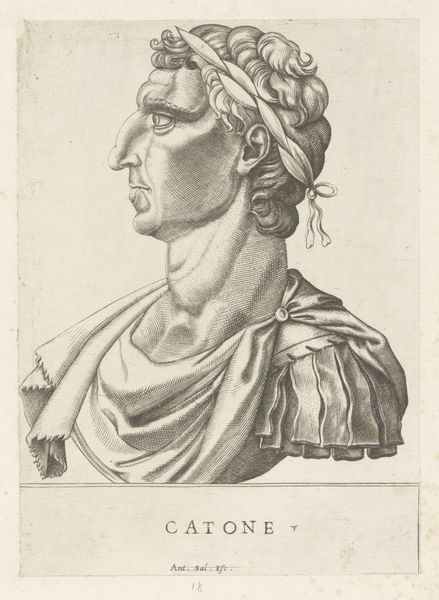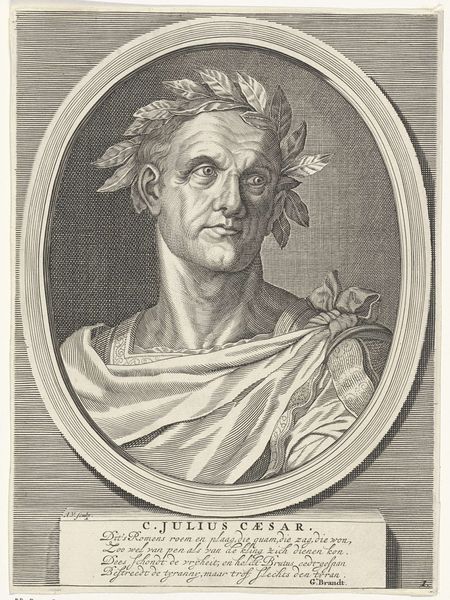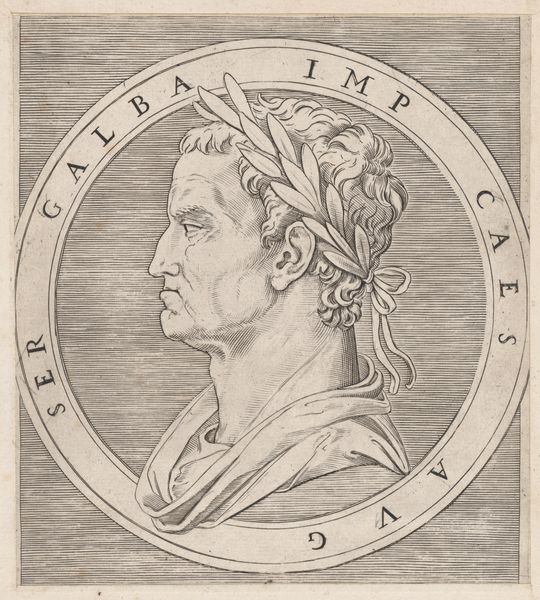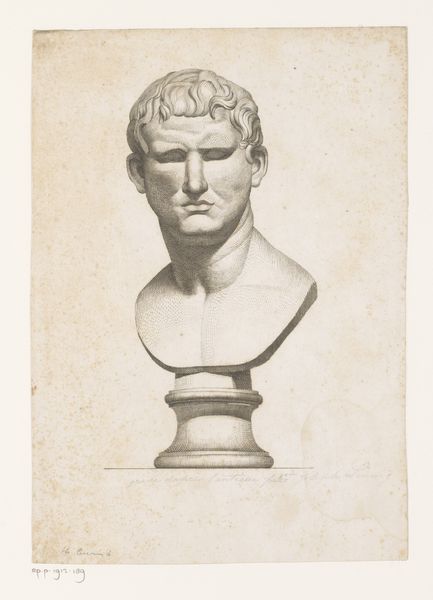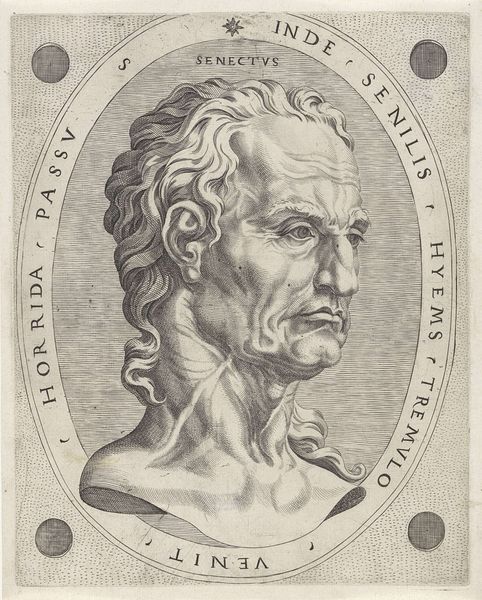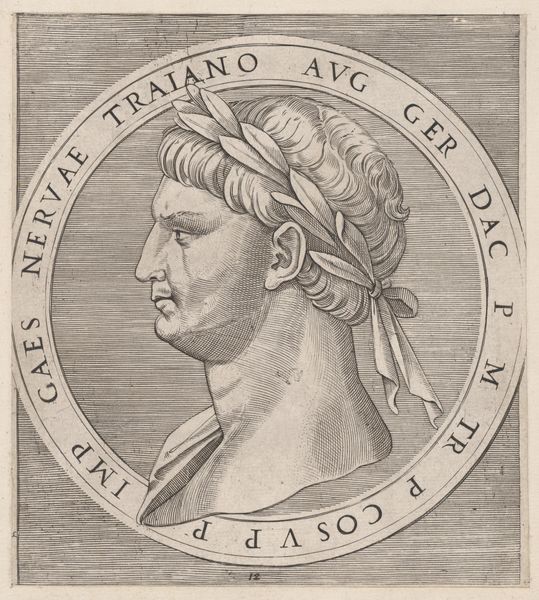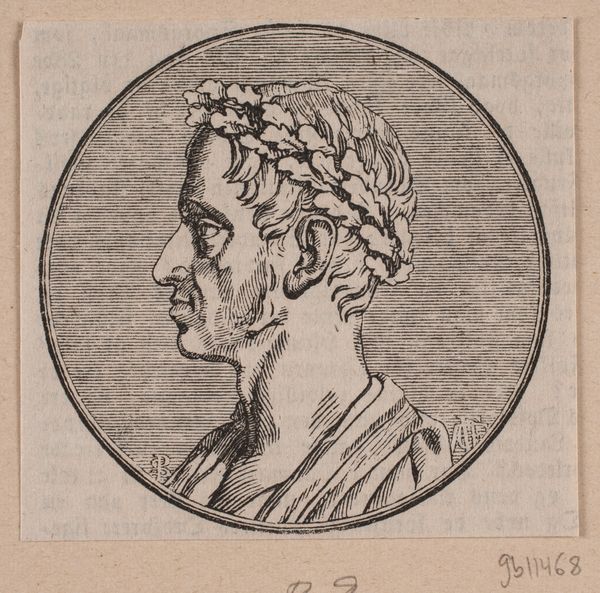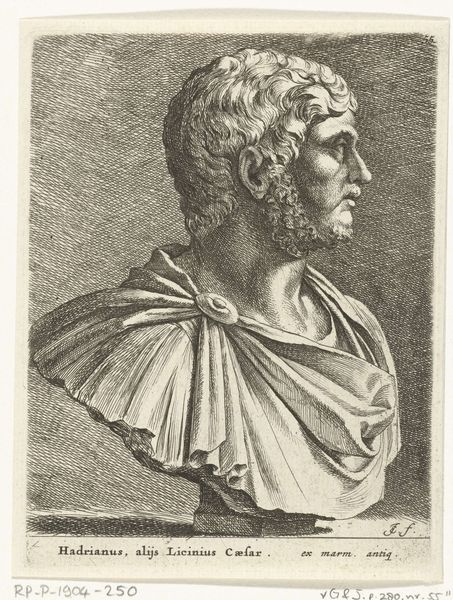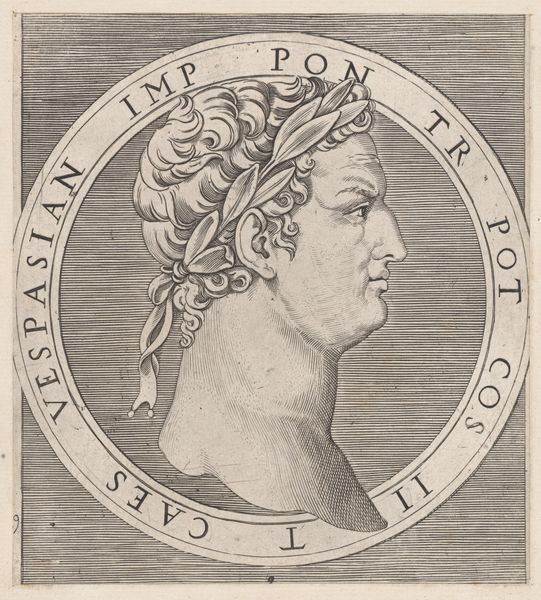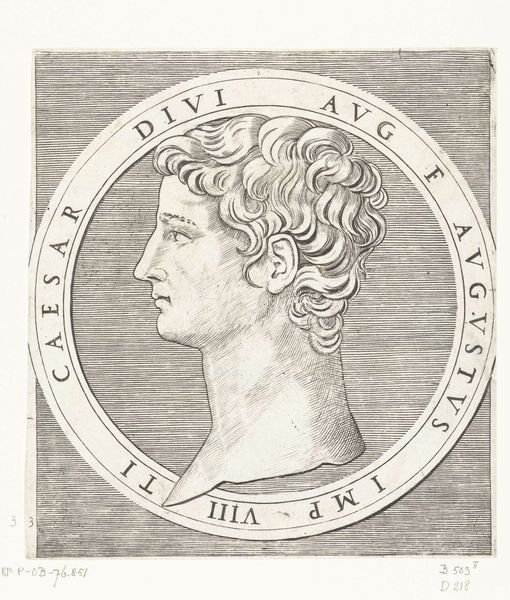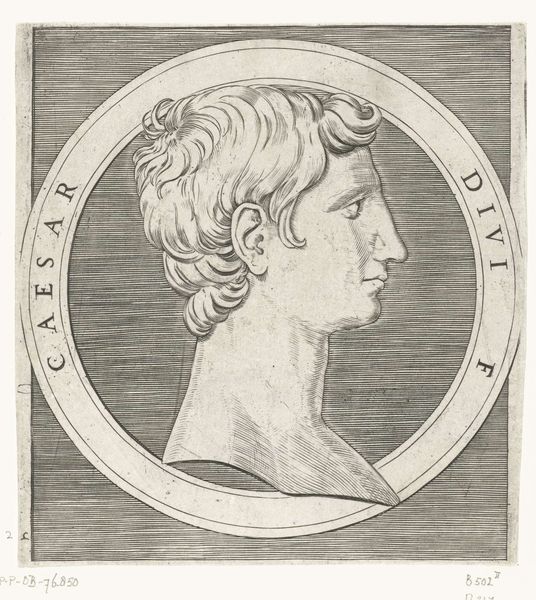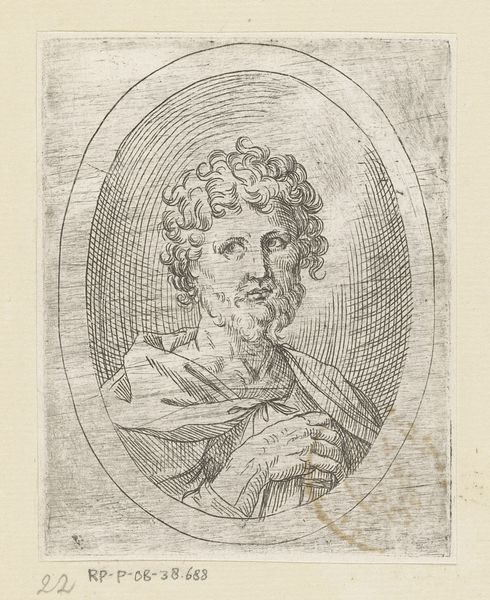
Speculum Romanae Magnificentiae: Julius Caesar, from The Twelve Caesars 1495 - 1539
0:00
0:00
drawing, print, engraving
#
portrait
#
drawing
# print
#
figuration
#
11_renaissance
#
portrait drawing
#
history-painting
#
italian-renaissance
#
engraving
Dimensions: mount: 11 x 16 3/4 in. (28 x 42.6 cm) sheet: 6 1/2 x 5 7/8 in. (16.5 x 15 cm)
Copyright: Public Domain
Marcantonio Raimondi created this engraving of Julius Caesar as part of his series "The Twelve Caesars". Note the laurel wreath, a potent symbol of triumph and imperial power since ancient Greece, encircling Caesar's brow. The wreath's presence connects Caesar to a lineage of heroes and gods, its circular form suggesting eternal glory. We find echoes of this motif in countless later works, from Renaissance portraiture to modern-day emblems of achievement. Think of Napoleon crowning himself with laurel leaves, or the olive wreaths awarded at the Olympic Games. But consider, too, the subtle shift in meaning. What began as a marker of divine favor and military victory gradually evolved into a more generalized symbol of excellence. This transformation speaks to our collective need for heroes, and our enduring fascination with the trappings of power. Even now, the image of the laurel wreath evokes a primal sense of admiration and awe, tapping into deep-seated cultural memories. It's a visual echo that continues to resonate across centuries.
Comments
No comments
Be the first to comment and join the conversation on the ultimate creative platform.
